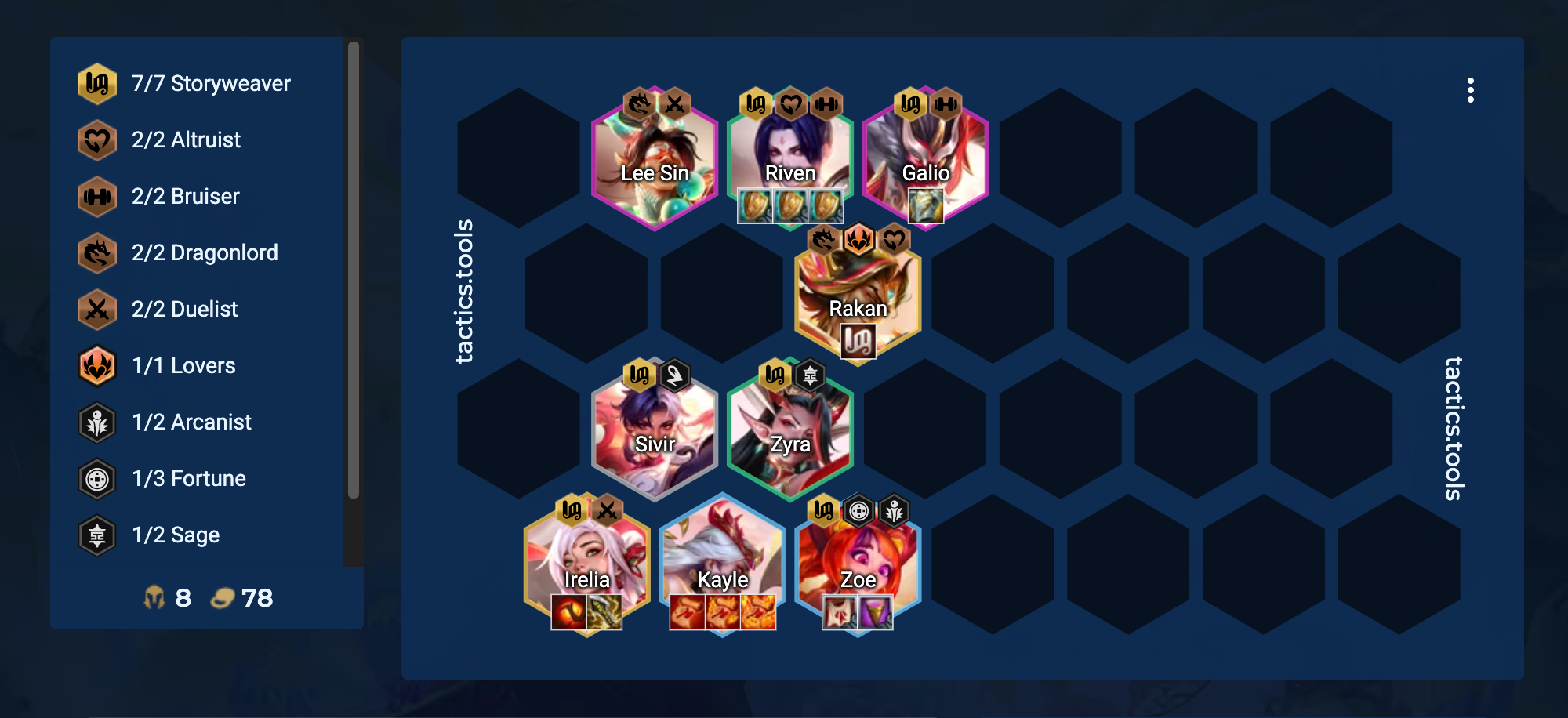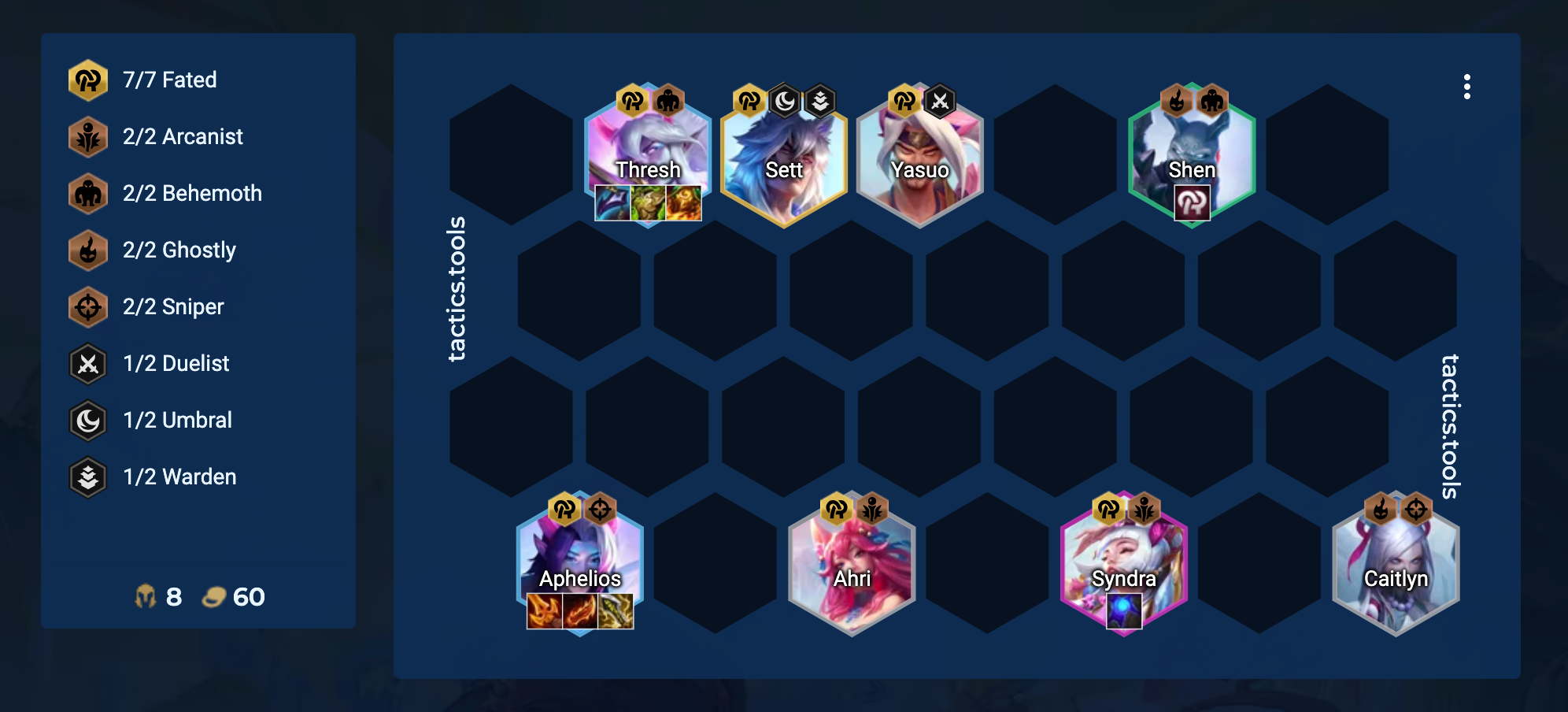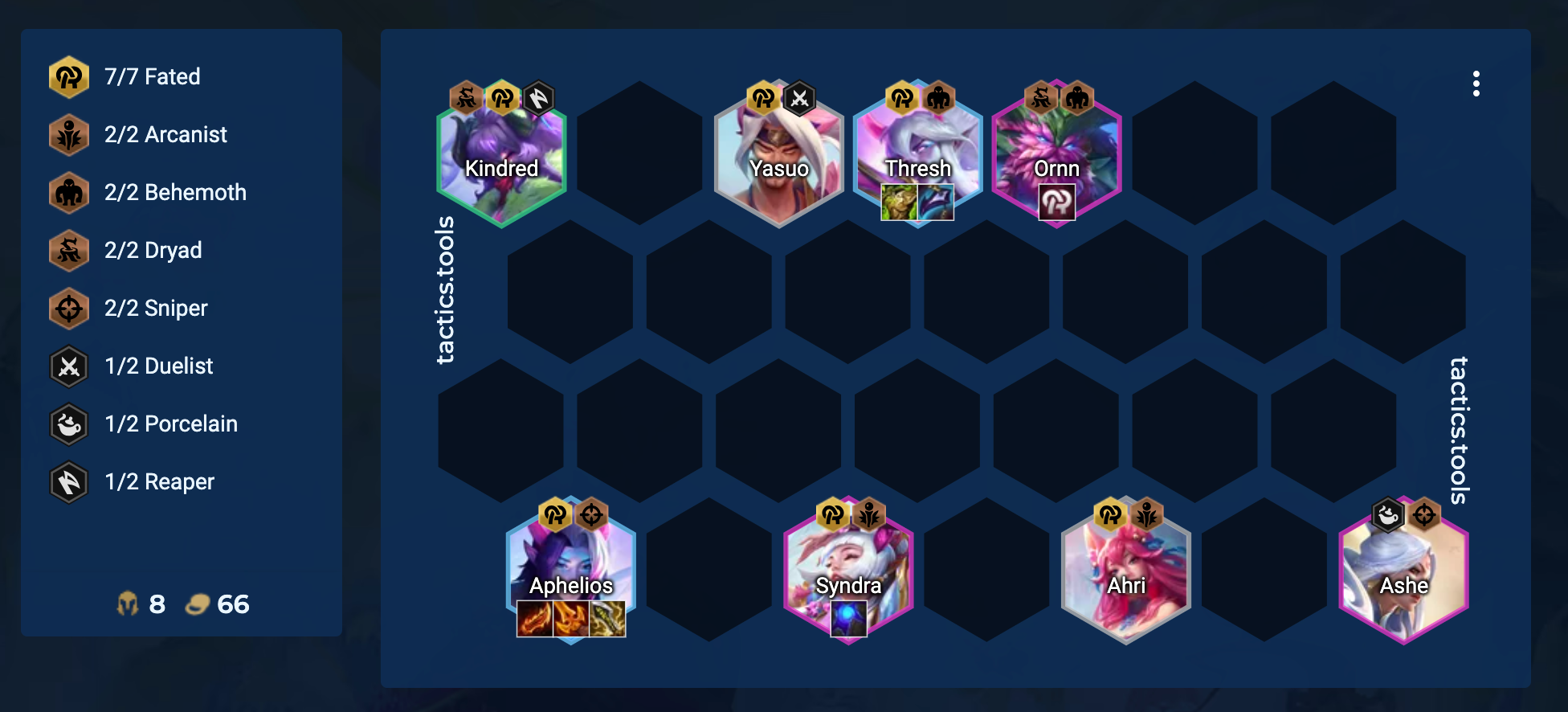Five Easy Comps to Play in TFT: Inkborn Fables
With a new TFT set comes new champions, traits, and encounters, which can be overwhelming. Here are some of the ideal comps in the meta as of right now.
With a new TFT set comes new champions, traits, and encounters, which can be overwhelming. Here are some of the ideal comps in the meta as of right now.
Teamfight Tactics recently released Set 11: Inkborn Fables, full of new content, champions, and traits. Gone are the Headliners, replaced by Encounters which add a diverse twist to every game. And while the meta is constantly shifting, top players are beginning to find out the comps that work best for them. But it can be a lot of information to deal with, leaving new players a little confused. So if you’re looking for some tips, here are five of the easiest, yet most powerful compositions you can run in TFT: Inkborn Fables.
The Storyweaver trait summons a hero, Kayle, to assist the team in combat. As you stack up Storyweavers, Kayle can be upgraded with unique abilities, enhancing her power and allowing her to become a real carry.

An example of a full Storyweaver board. Created using tactics.tools team builder.
Storyweavers also has a very powerful opening, with plenty of low-cost units such as Sivir, Garen, or Riven to set up your board in the early game. However, as you move forward into the late game, try to secure a Storyweaver emblem and replace some of the low-cost units with stronger units to reinforce the board later on. Another Altruist unit such as Soraka or Rakan provides a very valuable trait to the rest of the comp.
This comp peaks around level 8 when you can hit 7 Storyweaver and give Kayle all three upgrades. While Kayle’s Red upgrades are generally the best for damage output in extended exchanges, on the Chinese servers Green-Blue-Blue has recently carved out a niche as a burst option to end fights quickly.

An example of a board with Support Itemization. Created using tactics.tools team builder.
And while these abilities take up the traditional item slots of a champion in TFT, Kayle can still receive buffs from support items like Zeke’s Herald. If you can access augments like Fine Vintage or Support Cache, it can help Kayle take over the board. Give Galio tank items (ideally including Gargoyle's) and Irelia some damaging ones, and you’ll be set.
This composition relies on Bard as the primary carry. Bard’s ability converts his auto-attacks to two of his iconic meeps for a period of time, each dealing a mix of physical and magic damage. As a reroll composition, you’re going to aim to hit him as a three-star so he can stand toe to toe against stronger, higher-cost units. The angle for playing this comp typically emerges when you already have some Bards on your bench. On level seven, begin rerolling for Bard and Tahm Kench. The best-in-slot items (BiS) for Bard are double Guinsoo’s Rageblade & Hextech Gunblade. These items allow him to maximize the up-time he has on the meeps and overwhelm the enemy, all while providing sustain for the rest of his team. Afterwards, prioritize Tahm Kench’s tank items, allowing him to be an immovable frontline while Bard dishes damage from a distance.

An example of a board with more 4-cost carries. Created using tactics.tools team builder.
A lot of Bard's power comes from the supplementary traits that help reinforce the comp. The Mythic trait provides him with elevated stats after a few turns, and Trickshot enhances his damage by a surprising amount. Even Storyweaver’s first trait breakpoint will provide Bard with more attack speed, allowing him to ramp up quickly.
If you see Bard in one of your lobbies and are looking for an answer, the Chilling status can keep him from stacking his attack speed as quickly. Some ways to acquire this debuff is with Morgana’s ability, or the artifact Eternal Winter.
This comp was very popular initially, and while it was tapped down a peg in a recent hotfix, Mythic Bard still holds a relevant spot in the meta but just isn’t as dominating as it was right out of the gate.
If you’re big on reroll comps, then you’re in luck. Another simple but strong setup is Fated Aphelios. Destined to carry, Aphelios dishes out big damage from afar, while Thresh holds down the front lines. Aphelios’ ability sunders three nearby enemies, which reduces their armor. He then fires a shot at each of them, dealing big damage across the board.
Similar to other reroll comps with 3-cost carries, your best chances for hitting Aphelios is at Level 7. Prioritize Aphelios, then Thresh, and round out your comp with the more affordable Fated units.

An example of a cost-effective Fated Aphelios. Created using tactics.tools team builder.
Once your core units are 3-star, then you can begin to level up and push for some more premium units, such as Ashe, Syndra, or Sett, all of which will provide more value than some of the cheaper champions that you might not have gotten on the roll down.
The best items for Aphelios would be Guinsoo’s Rageblade, Deathblade, and Infinity Edge, so keep an eye out for B.F. Swords in the carousels. There are a couple of good Fated pairings, but Yasuo & Thresh is a good one for reinforcing your frontline, and can even help units like Kindred tank a couple of spells.

An example of a board with more 4-cost carries. Created using tactics.tools team builder.
If you’re not hitting, don’t linger too long or try to overforce it. Fated has a lot of versatility. Ahri and Yasuo can pull their weight if you can get a lot of copies of them early on, and Syndra can also act as an alternative carry if you’re hitting more mage components as opposed to AD ones.
Ghostly has begun to creep into the meta, with Kai’Sa being a newer evolution. While initially considered to be one of the worst 4-cost units, she’s risen to become a bit of a sleeper carry unit. After taking or dealing 6 instances of damage, Ghostly units send a pair of spirits to haunt a nearby enemy and then heal for a small percentage of their health. These haunted enemies will take increased damage per specter, and after the haunted unit dies, move on to another enemy. At 6 Ghostly, enemies will take 20% damage per specter, which stacks up as the battle goes on.
Unlike the reroll comps highlighted earlier on, instead roll for your Kai’Sa, Morgana, and Kayn all on level 8, which will give you good enough odds to roll enough copies of them. You should be satisfied when you can hit 2-star on them, as while it’s very impactful to hit one of them at 3-star, it’s incredibly unlikely.

Example of a general level 8 board for Ghostly Kai’Sa. Created using tactics.tools team builder.
Early game, Senna can be substituted as a placeholder for Kai’Sa, as she functions similarly to Kai’Sa and has common traits with the rest of the units you may need. Jax also is a good, cheap unit, but if you’re heading into the late game and have the luxury to enhance your board, Udyr is never a bad option, keeping the Inkshadow trait and exchanging Warden for Behemoth.
The Inkshadow Tattoo is always slightly dependent, and with this standard comp you’ll only get one, so try and adjust your itemization based on which one you receive, as you might want to leave a slot open on a unit for it.
The key unit in this composition is Lillia, who manages to bridge the gap between the Mythic and Invoker traits. Lillia hurls an orb towards her target, which deals magic damage to the first enemy hit, plus adjacent enemies. Afterward, the orb shrinks and continues to roll through enemies. However, every third cast, Lillia throws out a special, larger orb, which does increased damage and also splits into multiple smaller orbs after making contact. Lillia functions as a backline mage, with the best-in-slot items being Blue Buff, Rabadon’s Deathcap, and Hextech Gunblade.

An example of a Mythic Invoker Board. Created using tactics.tools team builder.
It’s also a good idea to have an Ionic Spark on one of your frontline members, such as Tahm Kench, to help amplify the damage of your Invokers. Also having a secondary Invoker with Morellonomicon will help out in longer exchanges, which normally happens with a comp that relies on repeat casts like this one.
If you can’t cap out with 5 Mythic 4 Invoker, prioritize the 4 Invoker as it’s a lot more pivotal for Lillia’s damage output, as she is dependent on those repeat casts to get the larger orbs rolling about. Azir and Hwei are both excellent, but high-cost, options to cap out your board.
Overall, the TFT meta is constantly shifting with all sorts of strategies being relevant, and these are just some standouts to give you the upper hand in your games. The great thing about TFT is that none of these comps are the outright best, and it truly depends on how you play with the hand you’re given.